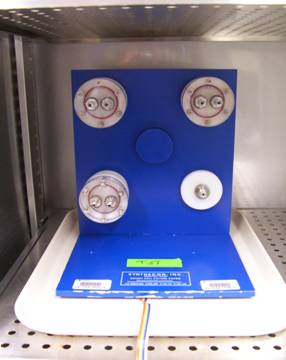Clinical Implications of Ex Vivo Therapeutic Hematopoietic Stem Cell Expansion
In the past decade, researchers have made significant progress in the field of ex vivo expansion of hematopoietic stem cells. These advances have manifested themselves in the clinical world as well, and clinical trials are ongoing involving transplantation of cells cultured in vitro. However, very little is known about how the culture process affects the biological and rheological properties of these pivotal cells. For example, are these cultured cells more, less, or equally able to migrate through the tiny capillaries of the body? Do these cultured cells have the same ability to reconstitute a patient’s hematopoietic system as their non-cultured counterparts? Therefore, the primary goal of this project is to attempt to elucidate some of the biological and rheological effects of culture and consider how these changes might affect a patient’s health.

Figure 1. Picture of a Rotary Cell Culture System (i.e. “Simulated Microgravity”)
A secondary objective of this project is to design a device to facilitate experiments in simulated microgravity. Simulated microgravity is an environment that has shown promise for culturing certain types of cells (Figure 1); however, the large volume requirements have limited research to only cell types that are available in high numbers. Likewise, a large volume of media and growth factors are needed to fill the 10 ml culture chamber, and supply costs can be considerable. Therefore, a novel, micro-well chip will be designed to reduce the volume requirement and promote economical research into the effects of this environment on cell growth. As a result, the usefulness of simulated microgravity for culturing hematopoietic stem cells can be explored. Microgravity culture has been shown to promote proliferation of bone marrow stem cells; does it have the same effect on umbilical cord blood stem cells? Regardless of whether simulated microgravity proves to be beneficial for cord blood stem cell expansion, this micro-well chip will be an important contribution to simulated microgravity technology, as it will minimize volume requirements and decrease supply costs.